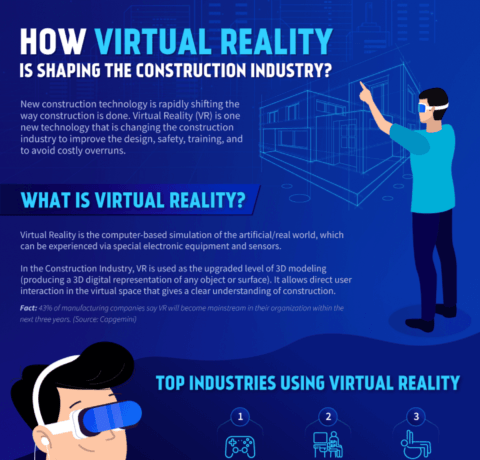Virtual Reality (VR) has revolutionized the way we train and learn, with immersive experiences offering an unprecedented level of realism and interactivity. Immersive Training Solutions represent the cutting-edge advancements in VR simulations that are transforming various industries. From military and healthcare to aviation and engineering, VR simulations are enabling individuals to acquire essential skills and knowledge in a safe and controlled environment.
Immersive Training Solutions have a rich history, with early attempts at using VR for training dating back to the 1960s. However, it is in recent years that advancements in technology have paved the way for truly immersive and effective training experiences. Today, with the integration of high-quality graphics, haptic feedback, and realistic simulations, VR training can simulate complex scenarios and provide trainees with hands-on practice that is both engaging and impactful. Moreover, studies have shown that immersive VR training can lead to higher knowledge retention compared to traditional training methods, making it a valuable tool in enhancing learning outcomes.


The Evolution of Immersive Training Solutions
Immersive training solutions have come a long way since their inception. The advancements in virtual reality simulations have revolutionized the way training programs are conducted. With the ability to create realistic and interactive environments, virtual reality simulations provide a safe, cost-effective, and efficient way to train professionals in various industries. From healthcare to aviation, from manufacturing to defense, immersive training solutions have become an integral part of modern training methodologies. This article will explore the advancements in virtual reality simulations and how they are shaping the future of training.
The use of virtual reality in training allows learners to experience scenarios that would be difficult or dangerous to recreate in real life. By using VR headsets and controllers, users can fully immerse themselves in a simulated environment and interact with objects and characters. This level of immersion enhances the learning experience, as it provides a sense of presence and engagement that traditional training methods cannot replicate. Virtual reality simulations enable learners to practice skills, make decisions, and face challenges in a realistic and controlled environment.
One area where the impact of virtual reality simulations is particularly noticeable is in the medical field. Surgeons can now practice complex procedures in a virtual operating room, allowing them to refine their skills before performing them on real patients. This not only improves the quality of care provided but also minimizes the risks associated with surgical procedures. Similarly, virtual reality simulations have been employed in aviation training to recreate the cockpit environment and simulate various flight scenarios. Pilots can practice emergency procedures and improve their decision-making skills without putting themselves or others at risk.
Enhancing Safety and Risk Management
One of the significant advantages of immersive training solutions is their ability to enhance safety and risk management. Traditional training methods often involve exposing learners to potentially hazardous situations, which can be costly, time-consuming, and dangerous. By using virtual reality simulations, these risks can be mitigated, allowing learners to practice high-risk tasks in a controlled and safe environment.
For example, in the field of firefighting, trainees can experience realistic fire scenarios without the actual danger of flames, smoke, or heat. This not only protects the trainees but also prevents damage to property and the environment. Similarly, in the construction industry, workers can practice operating heavy machinery in a virtual construction site, reducing the risk of accidents and injuries. By allowing learners to make mistakes and learn from them in a consequence-free environment, immersive training solutions contribute to a culture of safety and risk management.
The application of virtual reality simulations goes beyond physical safety. It also extends to training programs that require compliance with legal and ethical standards. For example, in the financial industry, employees can undergo virtual reality training to learn about and experience potential ethical dilemmas they may encounter. By putting them in realistic scenarios, they can develop the skills and judgment necessary to make sound ethical decisions. This proactive approach to training reduces the risk of non-compliance and the associated legal and reputational consequences.
In addition to enhancing safety and risk management, immersive training solutions also offer cost and time benefits. Traditional training methods often involve travel, accommodation, and the procurement of expensive equipment. With virtual reality simulations, training can be conducted remotely, eliminating the need for travel and reducing expenses. Furthermore, the repetitive nature of virtual reality training allows learners to practice skills multiple times in a shorter period, leading to accelerated learning and reduced training time.
Improving Learning Effectiveness and Engagement
Immersive training solutions not only offer practical benefits but also improve the effectiveness of learning programs. The interactive and immersive nature of virtual reality simulations enhances engagement and retention, leading to more effective learning outcomes.
One of the challenges in traditional training methods is the passive nature of the learning experience. Learners are often presented with information through lectures or textbooks, without active participation or practical application. Virtual reality simulations provide a solution to this problem by creating an environment where learners actively engage with the content. They can explore, interact, and make decisions, which leads to a deeper understanding and retention of the material.
Research has shown that the immersive nature of virtual reality training leads to higher levels of engagement and motivation among learners. This is particularly true for younger generations who have grown up with technology and expect interactive and dynamic learning experiences. By incorporating virtual reality simulations into training programs, organizations can cater to the learning preferences of their employees and ensure better knowledge acquisition and skill development.
In addition to improving engagement, virtual reality simulations also facilitate the transfer of skills from the training environment to real-world situations. The ability to practice tasks and scenarios in a realistic and interactive setting increases the learner’s confidence and competence. This transferability of skills is essential in industries such as emergency response, where the effectiveness of training can have life-or-death consequences.
Customization and Adaptability
Another advantage of immersive training solutions is their customization and adaptability. Virtual reality simulations can be tailored to meet the specific needs of different individuals, teams, or industries. Training programs can be designed to target specific skills, address weaknesses, or provide advanced training for experienced professionals.
The ability to customize training content and scenarios ensures that learners receive the most relevant and effective training. For example, in a customer service context, virtual reality simulations can be created to simulate different customer complaints or challenging situations. Employees can practice their communication and problem-solving skills in a realistic environment, allowing them to gain confidence and improve their performance.
Furthermore, immersive training solutions can be easily updated and adapted as technologies and practices evolve. This ensures that training programs remain current and aligned with industry standards. With the rapid advancements in virtual reality technology, new features and capabilities can be incorporated into training modules, enhancing the learning experience even further.
| Header 1 | Header 2 |
| Row 1, Column 1 | Row 1, Column 2 |
| Row 2, Column 1 | Row 2, Column 2 |
Key Takeaways: Immersive Training Solutions – Advancements in Virtual Reality Simulations
- Virtual reality simulations are becoming increasingly advanced in the field of immersive training solutions.
- These simulations offer a highly realistic and interactive learning experience.
- They allow users to practice and refine their skills in a safe and controlled virtual environment.
- Immersive training solutions using virtual reality can be applied to various industries, such as healthcare, aviation, and military.
- Virtual reality simulations have the potential to revolutionize the way training programs are conducted, offering efficient and cost-effective solutions.

In recent years, virtual reality technology has made significant advancements in the field of immersive training solutions. These simulations provide an effective and engaging way for individuals to learn and practice various skills in a virtual environment.
With virtual reality, users can step into a realistic and interactive world where they can simulate real-life scenarios without any real-world consequences. This technology has particularly revolutionized training in industries such as aviation, healthcare, and military. By allowing trainees to experience and experiment in a safe and controlled environment, virtual reality simulations enhance knowledge retention and skill development.


